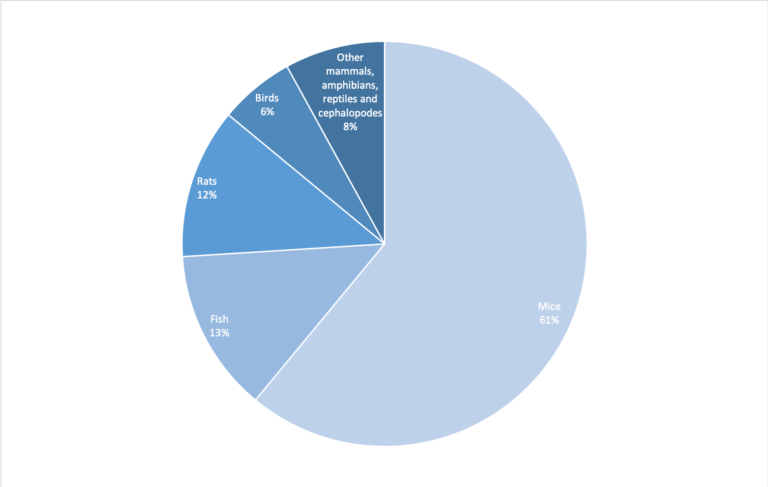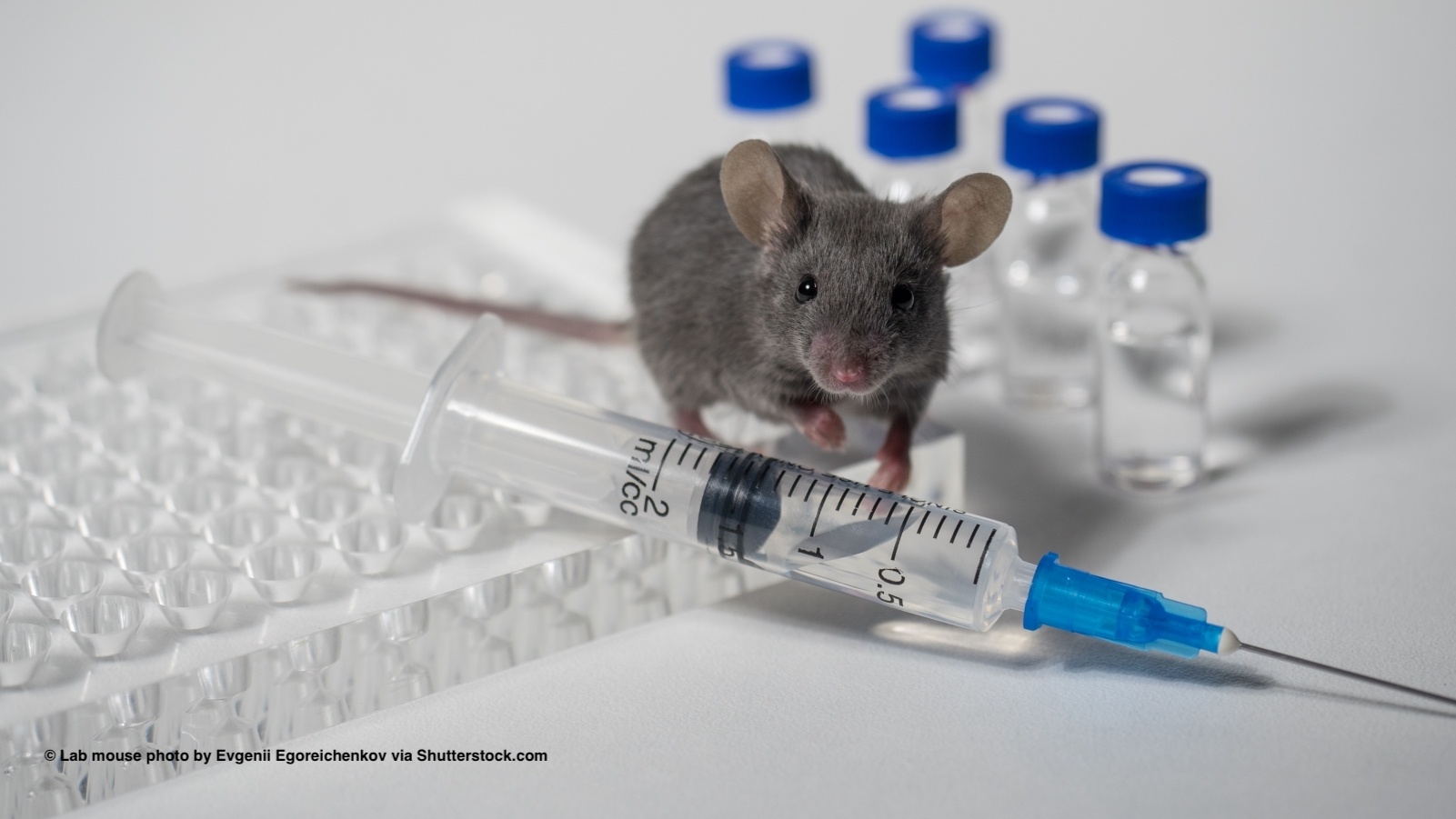The use of animals for scientific research and experimentations started over 2,000 years ago in ancient Greece (1). Although initial experiments were purely observational and comparative with the intent to learn more about human physiology and anatomy, animals quickly became models for translational research in numerous biological fields, mostly to contribute to human and animal health.
In this article, we will discuss the importance of animal experimentation for research, some animal welfare concerns, as well as laws and regulations which frame research good practices and finally how zebrafish are an interesting resource to consider when planning an experimental study.
The importance of animal experimentation for research
Most of medical and scientific discoveries related to the human anatomy, physiology and pathology were made possible thanks to animal modelling. Aristotle and other Greek philosophers quickly understood that animals could be used as models to help understand humans as physiological entities as both share many behavioural, physiological and anatomical characteristics. Their observations marked the beginning of comparative medicine which today is critical for translational research and progress in the fields of human and animal health (1).
In the beginning of the 20th century, the use of animal models became very popular not only for observational research but also for experimental purposes. Rodents were the animal of choice for biological research (1). Animals (including humans) are complex organisms made of a large network of cells, tissues and organs which work together to achieve their distinct physiological functions. While molecules and tissues can be studied in vitro using various imagery techniques, complex tissues and organs need to be studied in vivo in order to understand the high level of complexity of each mechanism regulated by numerous biological signals (2). The functioning of an organism as a whole including its physiological functions and systemic interactions cannot be understood by studying individual organs and cells separately. Therefore, modelling these interactions in animals is crucial for understanding and validating human data.
Not only do animal models provide answers to scientific questions and make major breakthroughs in basic science and medical research possible but they are also incredibly important for the development and testing of new vaccines and therapies. Human diseases often affect other species and the underlying mechanisms remain similar, making drug development beneficial for both humans and animals. As a matter of fact, 90% of drugs used to treat animals are very similar, if not identical to human drugs. Type I diabetes, hypertension, cancer and allergies are only a few of the common conditions which affect a large panel of animals (2).
However, it is important to realise that not all data can be fully translated from animals to humans. Therefore, it is extremely important to consciously select the appropriate model for each study. Choosing the most informative species which will mimic as accurately as possible a human condition will give the best results and predict a similar outcome in humans (1-2). As mice were the first animals to be inbred and used to create a pool of genetically identical organisms, they remained for a long time the most popular laboratory model. With the emergence of genome manipulation technologies, other species could be genetically modified, creating a larger panel of organism models available for biomedical research. Nowadays, dogs, rabbits, pigs, sheep, non-human primates, chickens and zebrafish are some of many models frequently used as experimental models (1).
Species used for research in the member states of the EU in 2017

Figure 1: percentage of each species used for research in 2017 by the member states of the EU. 92% of these animals were mice, fish, rats and birds (3).
According to the 2019 report on the statistics on the use of animals for scientific purposes in the Member States of the European Union in 2015 and 2019 the number of animals used for research and testing seems to be decreasing over the years. While in 2008 over 12 million animals were used for research, in 2017 the figures were as low as 9.39 million. Among those animals, 92% were mice, fish, rats and birds (3).
Concerns, laws and regulations for animal research
Although the use of animal models for biomedical research is essential, it remains a highly discussed topic and raises several animal protection and welfare concerns. In 1959, William Russel and Rex Burch formulated three simple measures to frame animal experimentation and improve animal welfare. Those measures are known worldwide as “The 3 R’s principle” which stands for “Replacement”, “Reduction”, “Refinement” (4-5).
Replace
Whenever it is possible and when identical results can be achieved, non-animal models should be favoured.
Reduce
When animals are used as models, the lowest number allowing to obtain reliable results should be used.
Refine
When animals are used as models, minimising pain and suffering should be a priority.
“The 3 R’s principle” is the foundation of the European Directives for research and every scientist is responsible to recognise their importance. A high regulation of animal experimentation is crucial for insuring their wellbeing. Therefore, any project involving animals needs to be approved beforehand by a competent authority after passing an ethical evaluation by an Animal Ethics Committee (2). It is without saying that the progress in terms of knowledge which is intended to achieve must outweigh the potential harm done to the animals.
The European Union Directive regulates animal experimentation since 2013. It is an adapted text from its initial version published in 1986, which was the first common legislation to implement standards for animal protection throughout the European Economic Committee (which today has become the European Union) (6). The new text based on “The 3 R’s principle” particularly emphasises on Replacement. As modern technologies expand, researchers are encouraged to find alternative methods to animal models which would yield the same results (7).
How zebrafish can be a solution
The popularity of zebrafish in biomedicine research is in constant growth, due to their low maintenance cost and high physiological and genetic similarity to humans. A large-scale genetic screen allowed to identify thousands of mutant phenotypes which in some cases seem to be excellent human disease models. As adult and larvae zebrafish are well understood and their physiology and behaviour well characterised, they are today a well-accepted model but not yet well regulated (8).
Over the past several years, our ability to manipulate genomes has improved and it turns out that zebrafish are great genetically malleable species. Thus, in the biomedical field, the amount of zebrafish used versus previously popular animal models is increasing (1). In addition, today more than ever the choice of animal model is not only crucial for the best translation of results to human being but also to refine the use of animals by using the lowest ordered vertebrate on the evolutionary scale (1). Over the past 30 years, the amount of publications on zebrafish in PubMed has shot up from 48 publications in 1990 to 3956 in 2019. Although the use of rodents is still popular, the use of zebrafish is increasing way faster.
As mentioned in our previous article (What are zebrafish?), zebrafish have a lot of advantageous characteristics which make them interesting animal models. One of those is their ease of care and prolific breeding. Using zebrafish in laboratories allows to increase the number of subjects in a smaller space and at lower cost. Additionally, as zebrafish embryos are transparent and develop in transparent eggs, a lot of observations can be drawn from their development before the fish become adults. This is important to realize as little regulations apply to zebrafish embryos and in Europe they are not considered as living animals until they are capable of independent feeding (8).
According to the European Union Directive 2010/63/EU on the protection of animals in research, animals are not protected in their early stages of life. For fish, this can last until 120 hours post-fertilization, meaning when they have developed a digestive tract and swim bladder, can ingest food and have the ability to swim and all of the yolk has been consumed. Therefore, the embryos are considered as a replacement or a refinement method according to “The 3 R’s Principle”, as it is generally accepted that at that stage of life, they aren’t capable of feeling pain (9).
Consequently, zebrafish embryos can be an interesting substitute not only for adult fish, but also for larger models, such as mice and rats and may contribute to reducing the amount of animals used for research and experimentation (9).
References
(1) Ericsson, A. C., Crim, M. J., & Franklin, C. L. (2013). A brief history of animal modeling. Missouri medicine, 110(3), 201–205.
(2) Barré-Sinoussi, F., & Montagutelli, X. (2015). Animal models are essential to biological research: issues and perspectives. Future science OA, 1(4), FSO63. https://doi.org/10.4155/fso.15.63
(3) European Commission. (2020). 2019 report on the statistics on the use of animals for scientific purposes in the Member States of the European Union in 2015-2017.
(4) MacArthur Clark, J., Clifford, P., Jarrett, W., & Pekow, C. (2019). Communicating About Animal Research with the Public. ILAR journal, 60(1), 34–42. https://doi.org/10.1093/ilar/ilz007
(5) Hubrecht, R. C., & Carter, E. (2019). The 3Rs and Humane Experimental Technique: Implementing Change. Animals : an open access journal from MDPI, 9(10), 754. https://doi.org/10.3390/ani9100754
(6) Olsson, I., Silva, S., Townend, D., & Sandøe, P. (2016). Protecting Animals and Enabling Research in the European Union: An Overview of Development and Implementation of Directive 2010/63/EU. ILAR journal, 57(3), 347–357. https://doi.org/10.1093/ilar/ilw029
(7) Guillén, J., Prins, J-B., Howard, B., Degryse, A-D., Gyger, M. (2018). Laboratory Animals (Second Edition). Regulations and Recommendations for the Care and Use of Animals in Research. Chapter 5 – The European Framework on Research Animal Welfare Regulations and Guidelines. Academic Press. “https://doi.org/10.1016/B978-0-12-849880-4.00005-2”
(8) de Abreu, M. S., Giacomini, A., Echevarria, D. J., & Kalueff, A. V. (2019). Legal aspects of zebrafish neuropharmacology and neurotoxicology research. Regulatory toxicology and pharmacology : RTP, 101, 65–70. https://doi.org/10.1016/j.yrtph.2018.11.007
(9) Strähle, U., Scholz, S., Geisler, R., Greiner, P., Hollert, H., Rastegar, S., Schumacher, A., Selderslaghs, I., Weiss, C., Witters, H., & Braunbeck, T. (2012). Zebrafish embryos as an alternative to animal experiments–a commentary on the definition of the onset of protected life stages in animal welfare regulations. Reproductive toxicology (Elmsford, N.Y.), 33(2), 128–132. https://doi.org/10.1016/j.reprotox.2011.06.121




